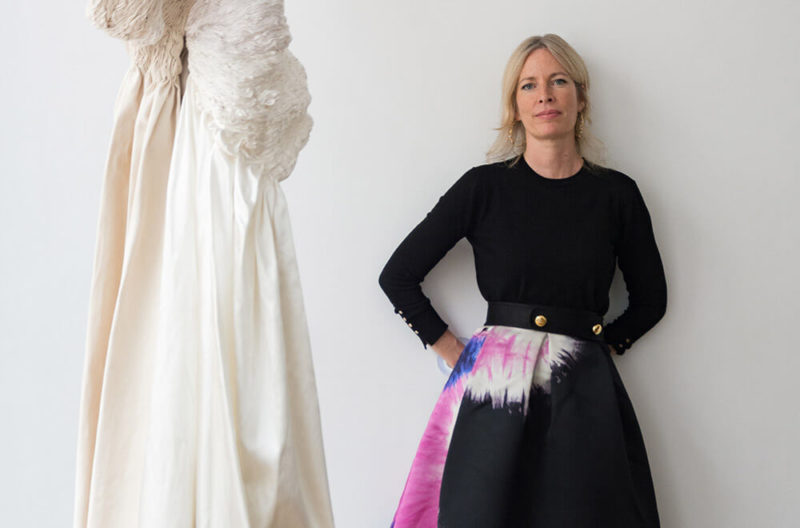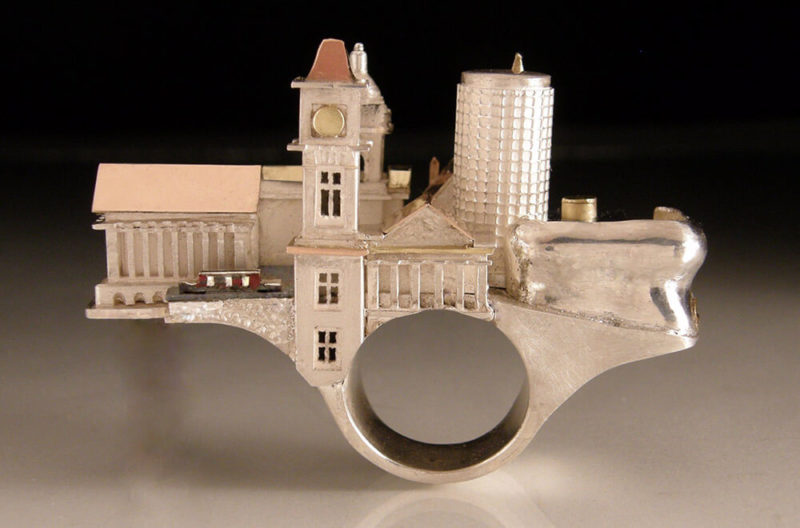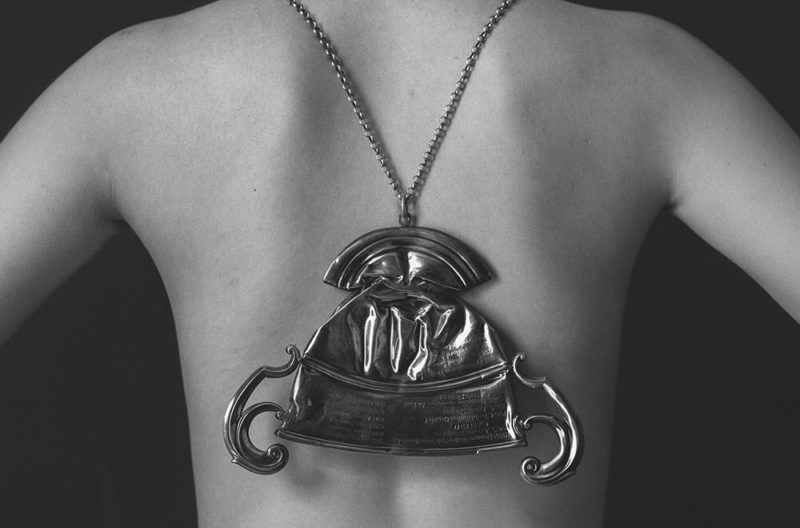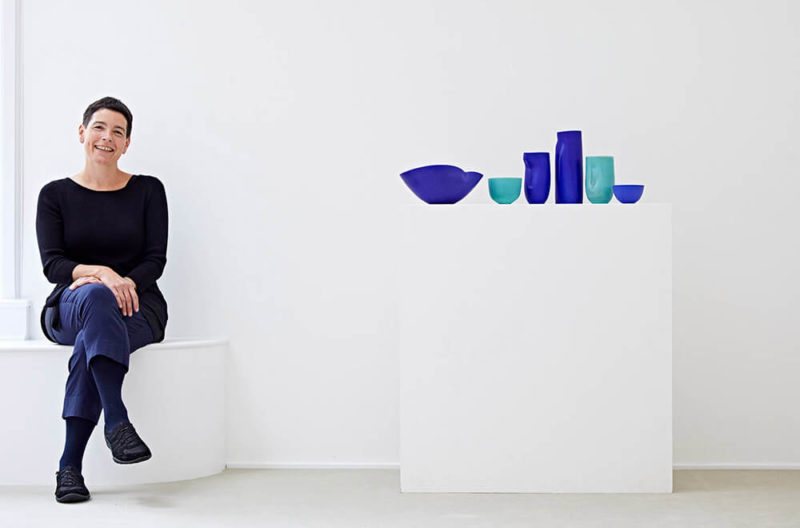Darcy Miro
The metals artist unveils a new collection, inspired by coral and animal scales.
Sienna Patti Gallery, Lenox, Massachusetts
6th November – 13th December
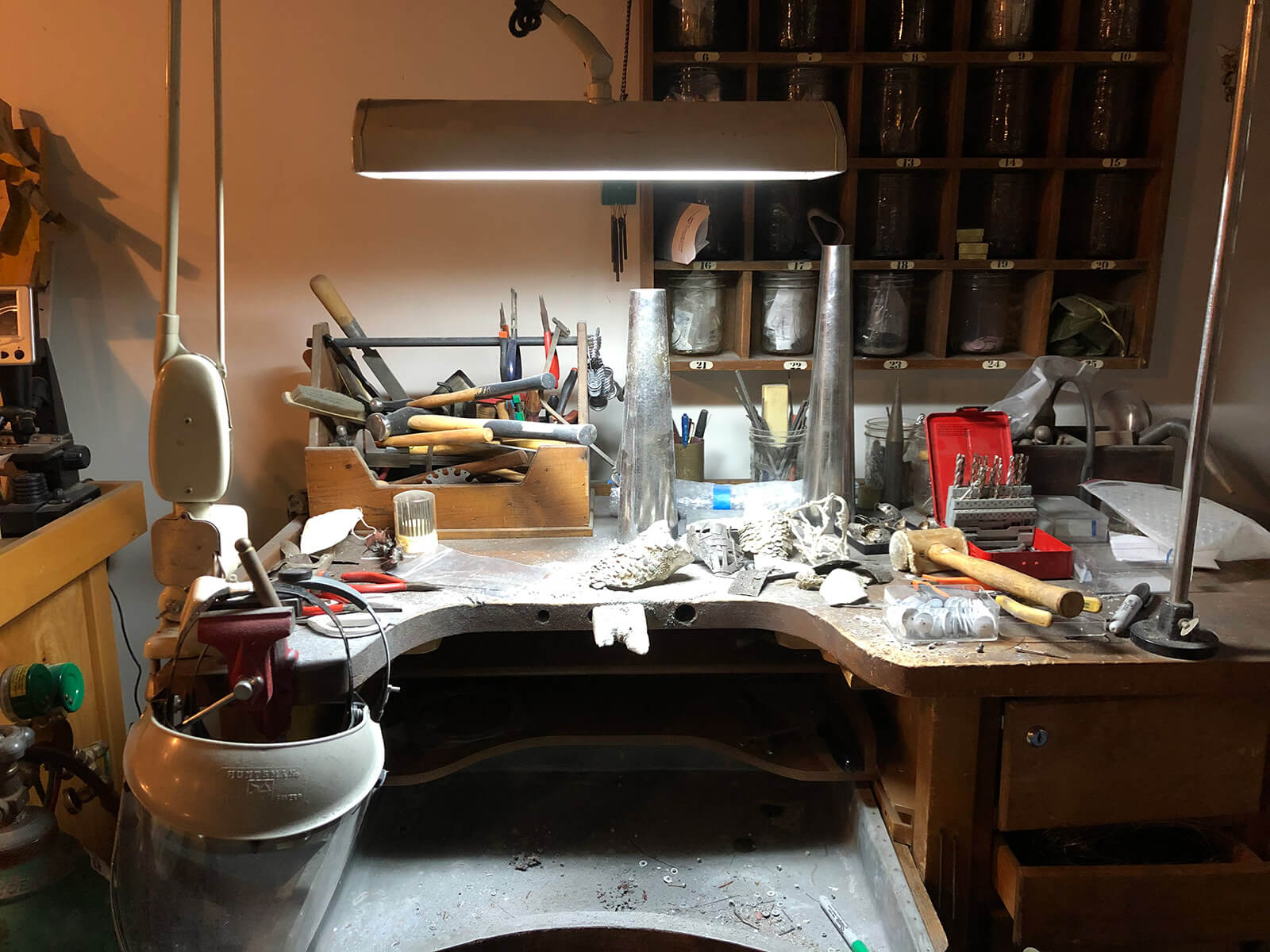
Darcy Miro’s workshop
COURTESY: Darcy Miro &
Sienna Patti Gallery
BREAKING UP THE homogeneity of mid-19th century Italianate brownstones on a leafy block in Brooklyn’s Fort Greene neighbourhood is a particularly modernist townhouse clad in brick and metal – the home of renowned jewellery artist Darcy Miro. From her basement studio, the designer intuitively crafts her highly-sought-after adornments and other sculptural works of varying scales. A new series of coral-inspired candlesticks are currently on view as part of Miro’s first solo show at Massachusetts platform, Sienna Patti Gallery, this month.
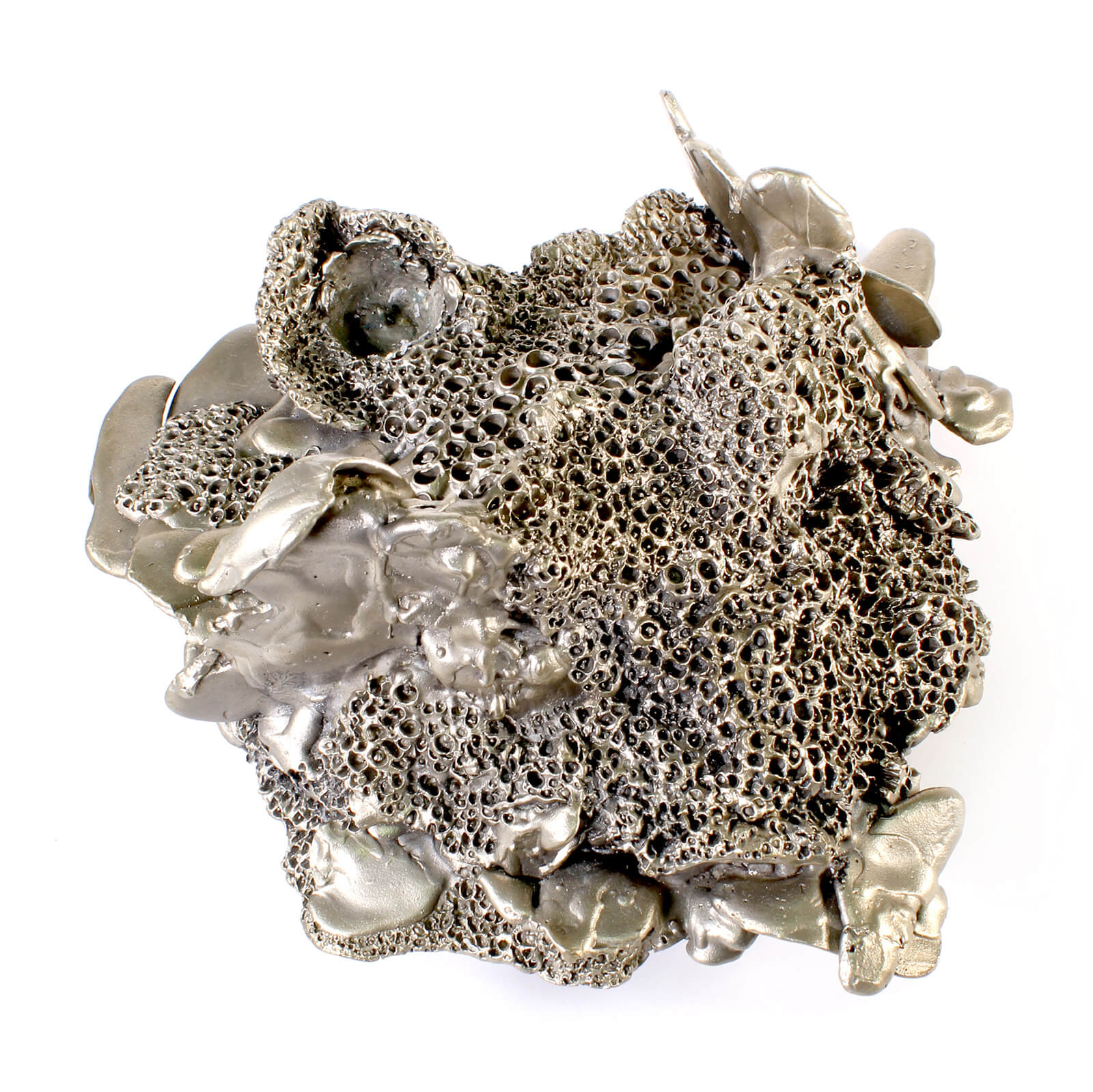
Darcy Miro, ‘Candlestick’, 2020
COURTESY: Darcy Miro & Sienna Patti Gallery
The Gold in the Gravel exhibition serves as a small retrospective and includes some of her more recognisable cuff bracelets. As the show’s name suggests, the artist’s seemingly blunt – yet carefully considered aesthetic – is defined by a playful juxtaposition of rough organically-cast metals and precious stones. The exhibition text describes this approach best: “The pieces glint and glimmer with diamonds peeping through a tangle of metal that is manipulated to resemble a found-object unearthed from another time.”
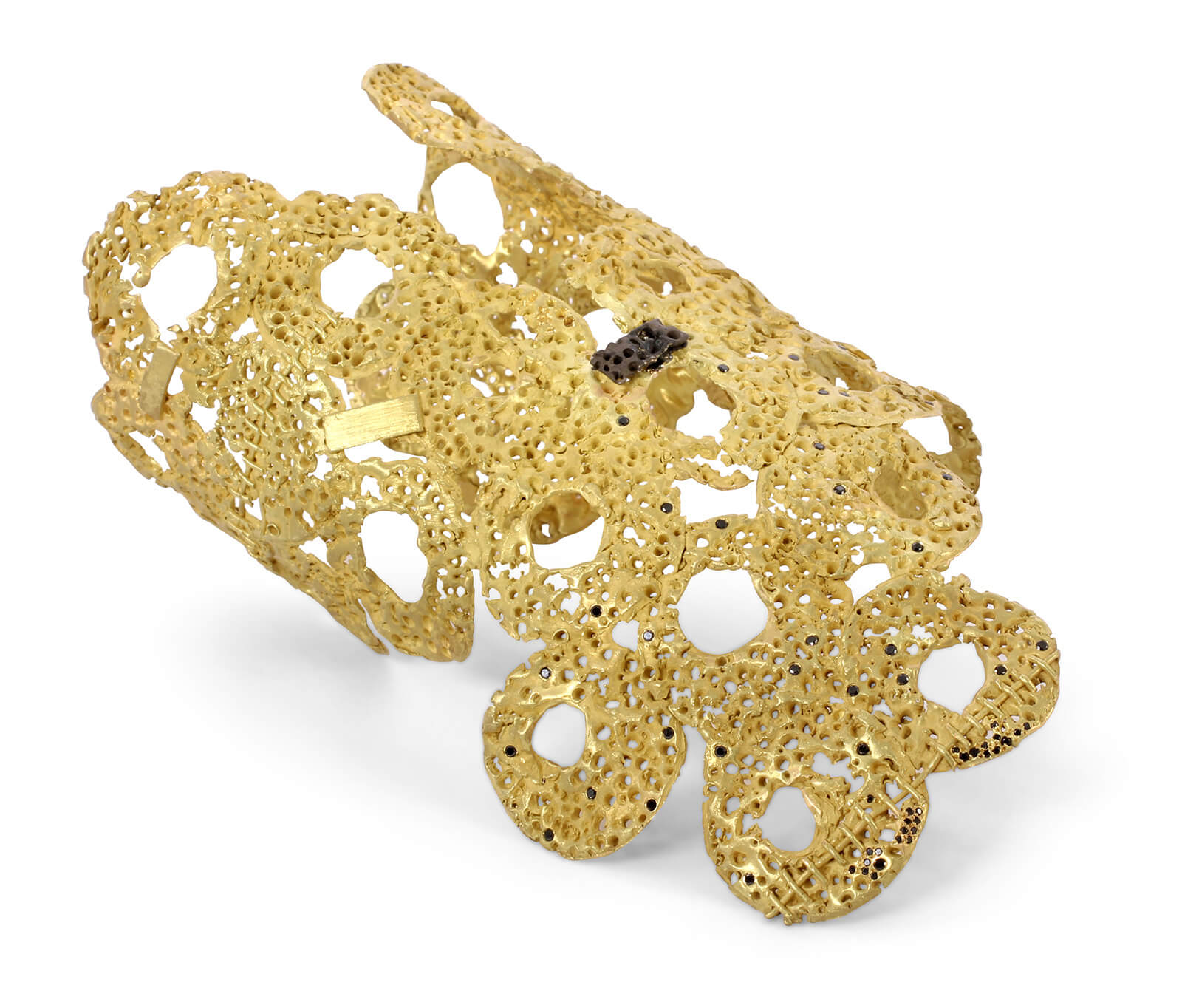
Darcy Miro, ‘Cuff’, 2020 COURTESY: Darcy Miro & Sienna Patti Gallery
The artist’s worktop is scattered with fine gem fragments, white bronze scraps, parts of past museum installations, experimental glass-blown vessels, and numerous ongoing projects. Perhaps the most essential element is Miro’s well-worn workbench, from which she spends most of her time meticulously fashioning new forms, collaging together bespoke works from various components.
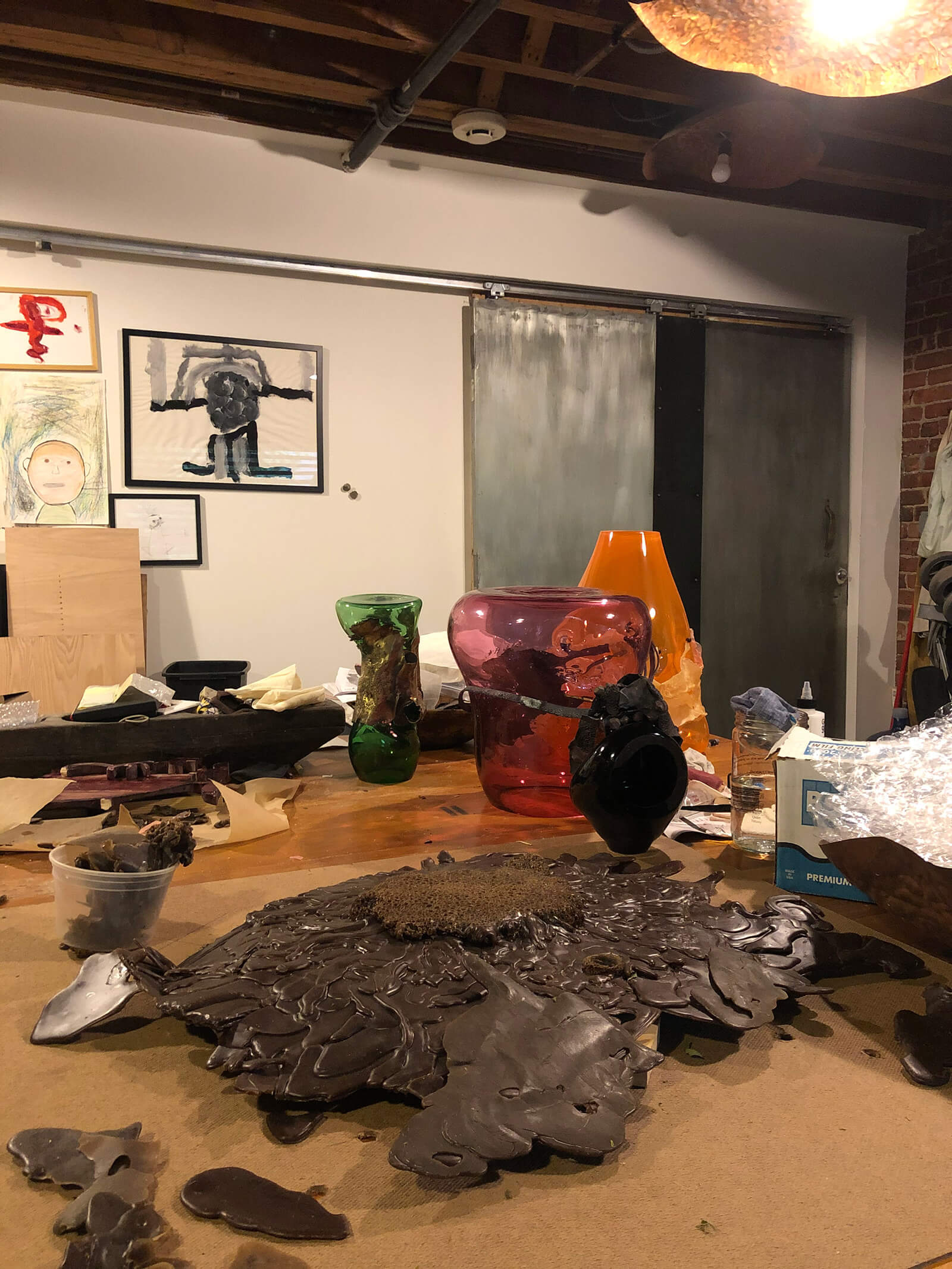
Darcy Miro’s workshop
COURTESY: Darcy Miro & Sienna Patti Gallery
“I create the material and then make it into something,” she explains. “It’s a meditative process that comes naturally to me. I never sit down and hash out an idea on paper ahead of time, but I do make rough sketches that allow me to work out the overall gist of what I want to make.” This approach lets her determine the configuration of the repeated textures she ends up using. Mastering the age-old lost wax bronze casting technique, Miro interprets and translates the patterns she uncovers in nature into raw balls of wax using adapted dentist’s tools.
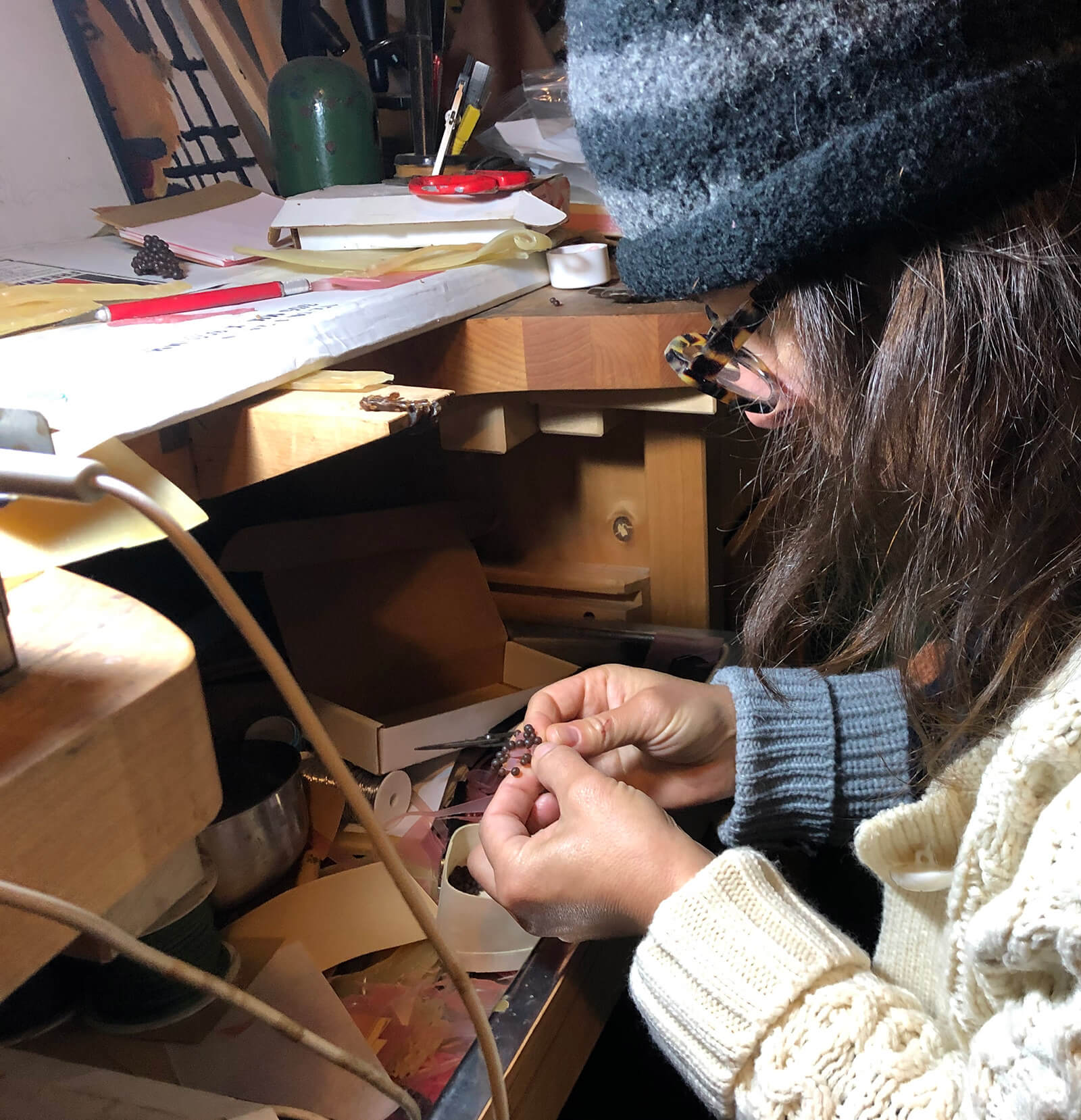
Darcy Miro at work
COURTESY: Darcy Miro & Sienna Patti Gallery
“In the past, I created textures out of everything from corn kernels to raisins – all sorts of strange things,” Miro recalls. “But over time, I realised that the lost wax method, which is normally used to produce objects in series, could give me even more freedom. Whenever I sit down and relax, I end up making thousands of little rolled up wax balls. I almost always have a few on hand and a pen to carve out patterns based on what I see. It’s pretty much always natural elements. Recently, I’ve spent a lot of time around chickens, tortoises, and fish. My latest works incorporate scale-like reliefs.”
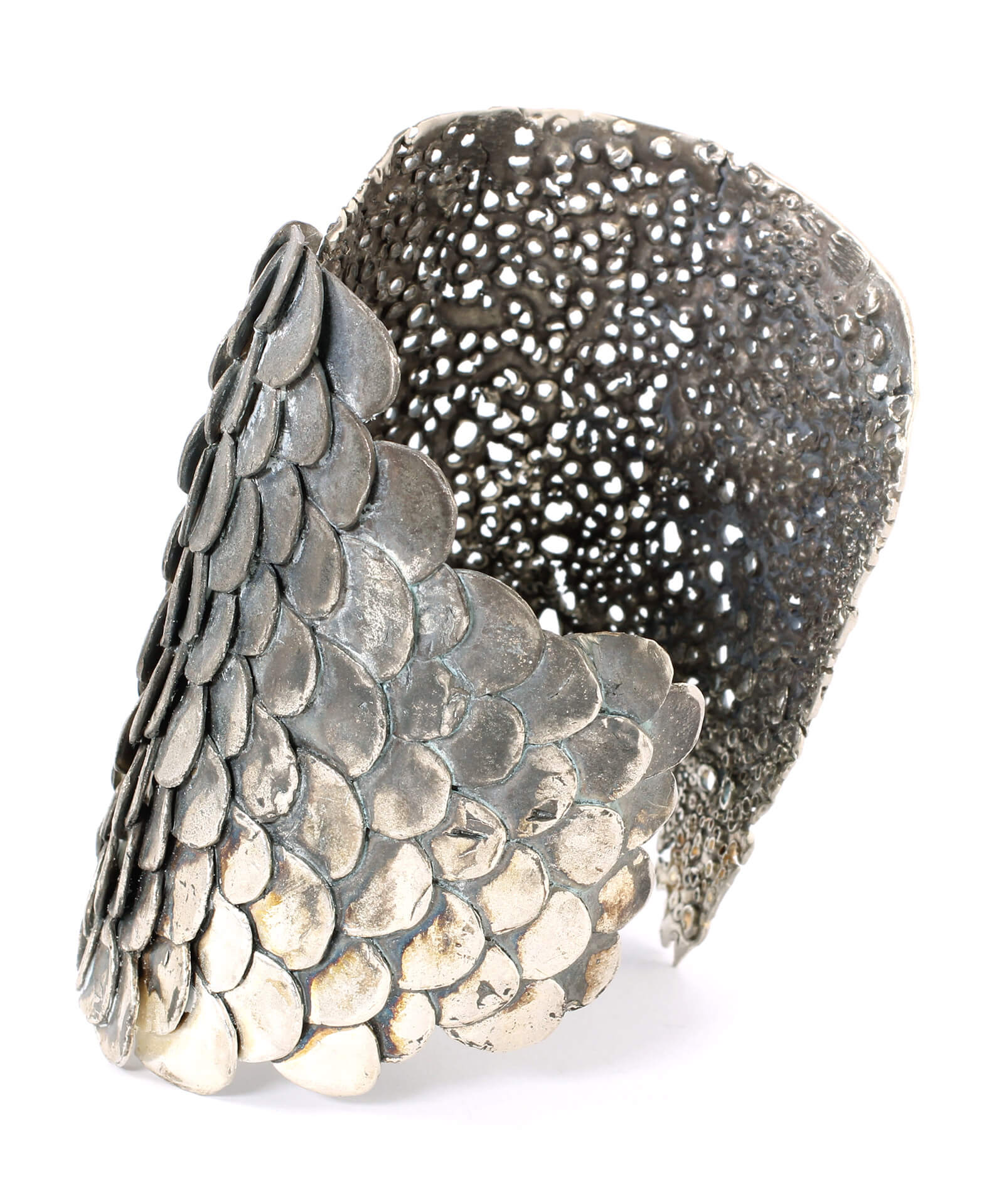
Darcy Miro, ‘Cuff’, 2020 COURTESY: Darcy Miro & Sienna Patti Gallery
She works closely with an upstate New York foundry that renders her designs in white bronze, sterling silver, or gold. She then often cuts and rearranges these forms into new compositions and finds clever, sometimes visually deceptive ways in which to set-in gemstones. The function of a given piece is determined at the end of the process: these collages can become anything from pendants and rings, to tables and lamps.
It might come as a surprise that Miro first trained in textile design at The Rhode Island School of Design. Though metal is an entirely different material, it shares many of the same intrinsic properties and techniques as fabric. “I fell in love with weaving because it’s very tactile, but also because it grows from something small into something large,” the artist explains. “Textiles will always be part of what I do because I think of metal as a fabric. However, metal is more stable and lasts longer. People wear my work, and I’ve worn it every day for 20 years, and nothing happens to it. If something did, it would be part of its charm. The structural integrity of metal is no joke, and I think knowing how to work with it is empowering.”
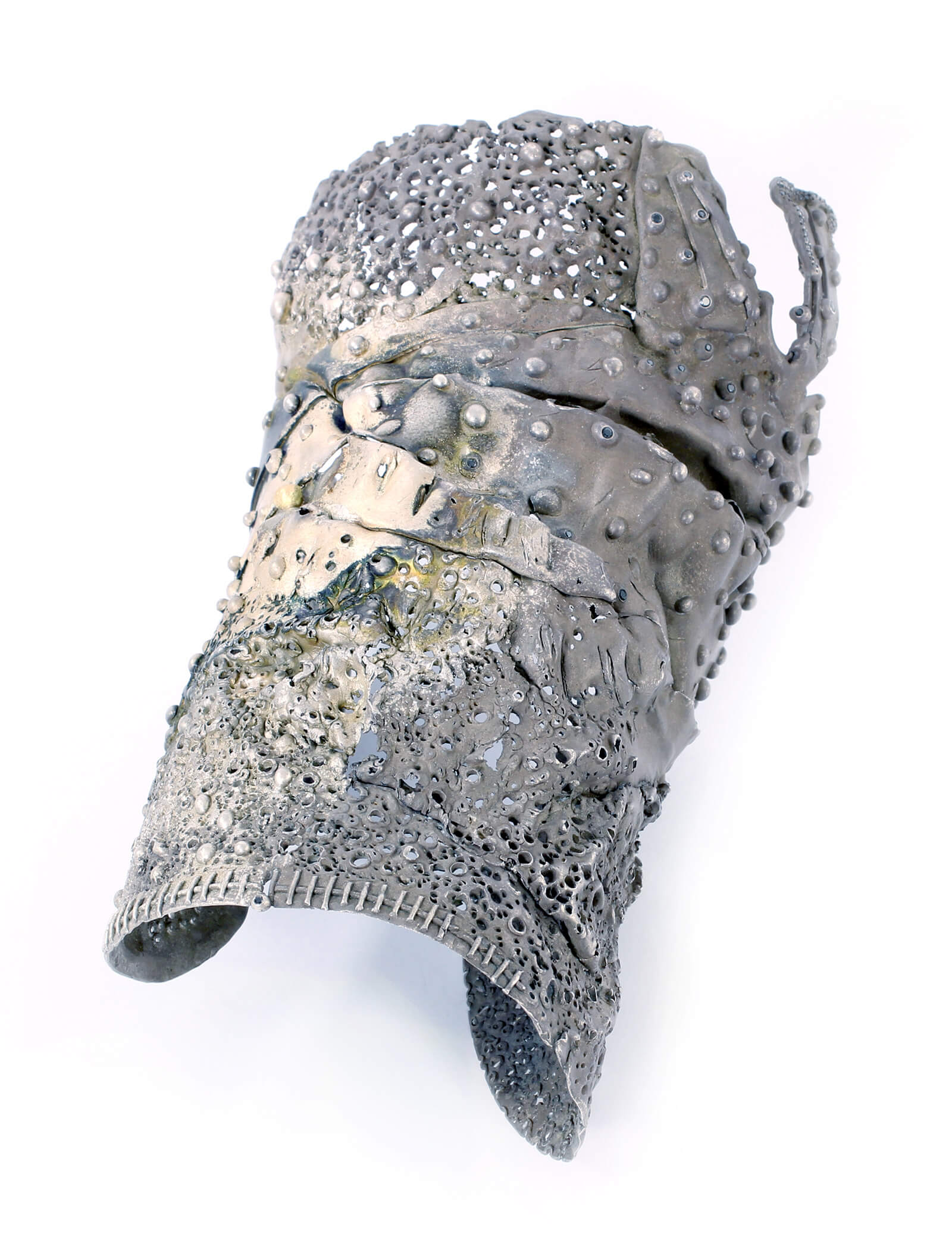
Darcy Miro, ‘Cuff’, 2020
COURTESY: Darcy Miro & Sienna Patti Gallery
Miro is also fascinated by the alchemic quality of the medium and the surprises it can spring, especially when being oxidised. For her, cast metal has more potential to be transformed than sheet metal, which is far more limiting. Her work is not about the material but what can be achieved with it. “I’m less interested in precision. If I’m making something to be worn, I want it to be comfortable, but it’s not going to be symmetrical.” the artist explains. “It’s not going to be even and can’t be replicated. It’s one of a kind.”
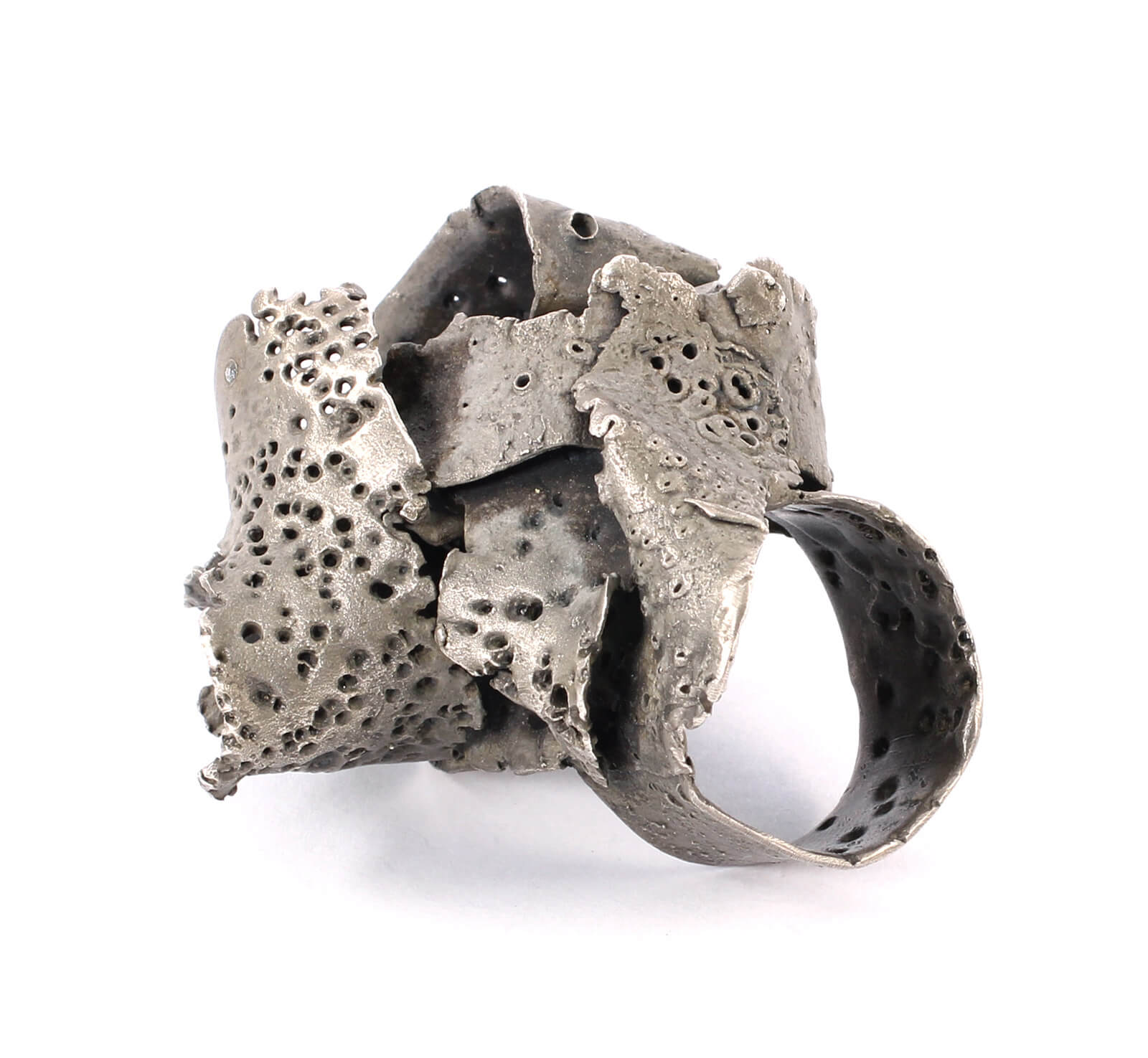
Darcy Miro, ‘Ring’, 2020
COURTESY: Darcy Miro & Sienna Patti Gallery
Miro has applied this approach on micro and macro scales. She famously collaborated with Tod Williams and Billie Tsien on the now-demolished American Folk Art Museum’s bronze facade. The work remains in the collection of the Museum of Modern Art that took over the original building. “Working on different scales is important. They inform each other. I’m constantly shifting and operating between the small and big. Oh, what if I take these seven rings and make 50 of them? It could be something entirely different. That’s the power of repetition.”
Shown as part of The Gold in the Gravel exhibition, the new candleholder collection captures the textural and haptic qualities of coral. “The depths of the ocean are so inspiring,” Miro reflects “I’ve always been fascinated with coral, its shape and the relationship between the micro and macro … Coral is alive, and can also be flexible. I’ve tried to capture that life in metal.”
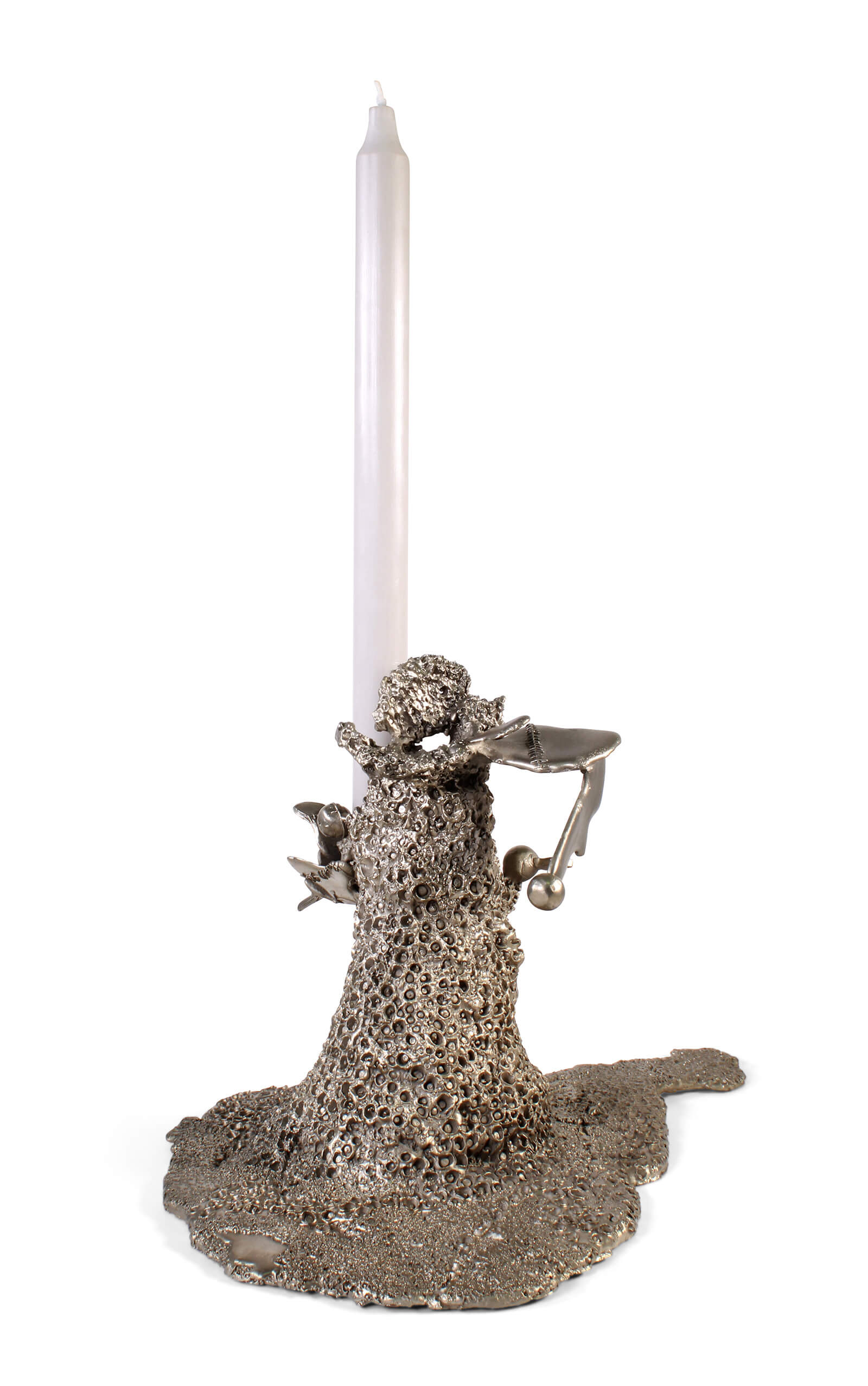
Darcy Miro, ‘Candlestick’, 2020
COURTESY: Darcy Miro &
Sienna Patti Gallery
Darcy Miro: The Gold in the Gravel at Sienna Patti Contemporary. Prices range from $2,400 – $18,600.




